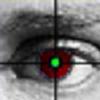



This superb model, the king's portrait mask, stands without parallel as a masterpiece of Egyptian--and perhaps the world--craftsmanship. It is made of two separate sheets of gold and represents the young King as Osiris, god of the Underworld, wearing the nemes (head cloth), with a pig-tail falling at the back. This is inlaid with blue glass in imitation of lapis lazuli. On the brow sit the vulture and cobra to spit fire at the Pharaoh's enemies. The back of the mask is chased with a series of texts from the Book of the Dead.


(Left) In its original form it was constructed of thick cedar wood covered with gold foil. It is ornate, with beautiful etchings and inscriptions. It shows the King in the shape of Osiris carrying the Crook and Flail.
(Right) These are part of the royal regalia. The crook and flail are worn by the god Osiris, god of the underworld, and by the divine pharaoh. The crook (hega) and flail (nekhakha) are made of cylindrical sections of dark blue glass, obsidian and gold mounted on a copper rod.


(Left) King Tut's Crown - This was the royal diadem found on the King Tut mummy. It is made of pure gold with inlays of glass and semiprecious stones and carries the vulture and the cobra to protect the young pharaoh.
(Right) Horus Pendant - This striking pendant, also found on Tutankhamun's body shows, the falcon god Horus. It is made of gold inlaid with semi-precious stones.
EGYPTIAN MARKETPLACE P.O. BOX : 49084 / ATLANTA. GA 30359













































































